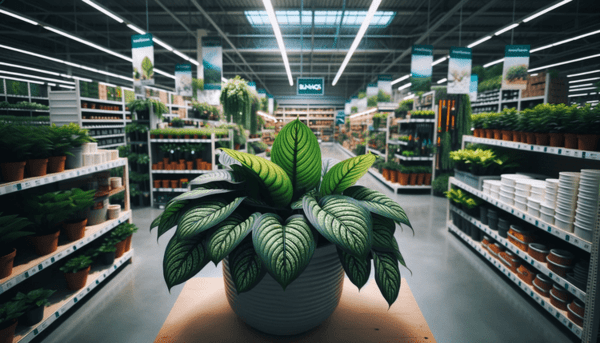
calathea
Information for the customer:
- Plant Habitats: tropical
- Plant Life Cycles: perannial
- Plant Position: indoor , potted
- Soil Type: well draining , porous , peat-based
- Common Diseases: root rot , leaf spot
- Common Pests: spider mites , mealybugs
- Watering Needs: moderate: anytime between weekly to fortnightly
- Shade Requirements: yes
- Lighting Requirements: less/average light: 25% - 50% of daily sun
- Pet Child Friendly: yes
- Air Purifying: yes
- Humidity Needs: high
Helpful Tip:
- Helpful Tip: Avoid direct sunlight; prefers warm and humid conditions
Additional Facts and Info:
- Scientific Name: Calathea spp.
- Native To: tropical Americas
Extensive Info on the calathea:
How do you take care of a Calathea?
Location
As Calathea plants originate from under the trees in rainforests, a Calathea doesn't enjoy direct or bright sunlight. They prefer indirect sunlight or even partial shade as direct sunlight burns and scorches their leaves. Worst of all, direct sun will make the vibrant leaves go dull.
Watering
The Calathea consumes a lot of water. In summer it is best to add small amounts of water twice a week. From autumn to spring once a week is sufficient. It is important that the Calathea always has its soil moist. However, make sure you don't overwater the plant, as this can cause the root to rot. Try giving Calathea plants lukewarm water instead of cold, as they're used to warmer temperatures. Next to watering, it is also important to spray a Calathea with a plant sprayer. They like high humidity. A perfect bathroom plant!
Plant nutrition
The Calathea uses a lot of energy from spring onwards to make new leaves. As a result, the plant needs extra nutrients. You can provide these nutrients by plant nutrition. We recommend giving plant nutrition once every two weeks. From spring until autumn. After autumn and in winter, it is better to stop giving extra nutrients. In the autumn, plant nutrition can actually be harmful to the Calathea!
Repotting
We recommend repotting the Calathea every 2 years. Repotting gives the plant new nutrients and more room for root growth. The airier soil is also very good for the water flowing through. The best period to repot is spring.
Air-purifying
The Calathea is a very air-purifying plant. This is mainly due to the long leaves of Calathea. The long leaf surface gives the plant extra stomata. The Calathea uses these stomata to convert CO2 into oxygen during the day. And that is always good. For you and your home.
Is a Calathea toxic?
They're non-toxic for humans and pets, making them the perfect choice as an indoor plant.
Diseases and peculiarities
If the air is too dry, the Calathea can suffer from spider mites. To prevent spider mites, it is best to use the plant sprayer once a week. Spider mites are an infection of mites on plants. You can recognize the infection by infected leaves and a kind of cobwebs. If you have come across spider mites, it is best to place the plant outside. Wind and moisture from outside will quickly keep the spider mite away.
Frequently asked questions about the Calathea
Why are the leaves of my Calathea curling?
The leaves of a Calathea can curl for several reasons. The most common reason is that the air is too dry. You can increase the humidity by spraying the leaves of the plant with a plant spray. It is also possible that the leaves are curling because the plant is not getting enough water. You can test this by sticking a finger or a toothpick into the soil.
Is the soil of the Calathea dry 2 days after watering? Then give it more water next time.
Is the soil of the Calathea wet 6 days after watering? Then give it less water next time. Why are the leaves of my Calathea drooping? The leaves of the Calathea usually droop when the plant doesn't get enough water. Water the plant, and you will see that within a few hours, the leaves will be upright again.
Why do the leaves of my Calathea get brown edges?
If the Calathea gets too much light, the leaves may develop brown edges. It is also possible that these brown edges are caused by a location with a lot of draught.
Can you propagate a Calathea?
Yes, you certainly can. Check out our tips on how to propagate the Calathea.